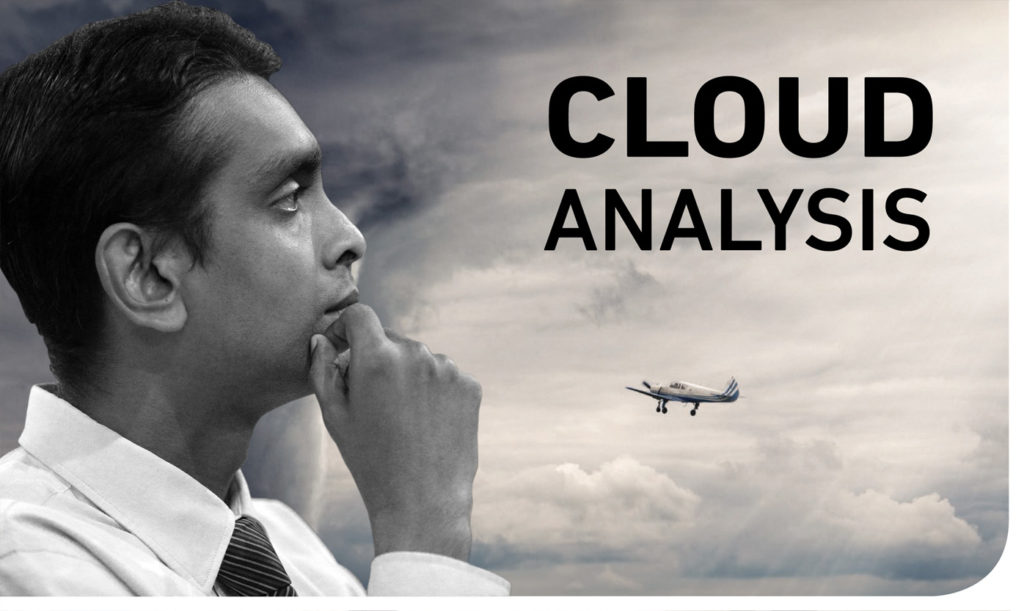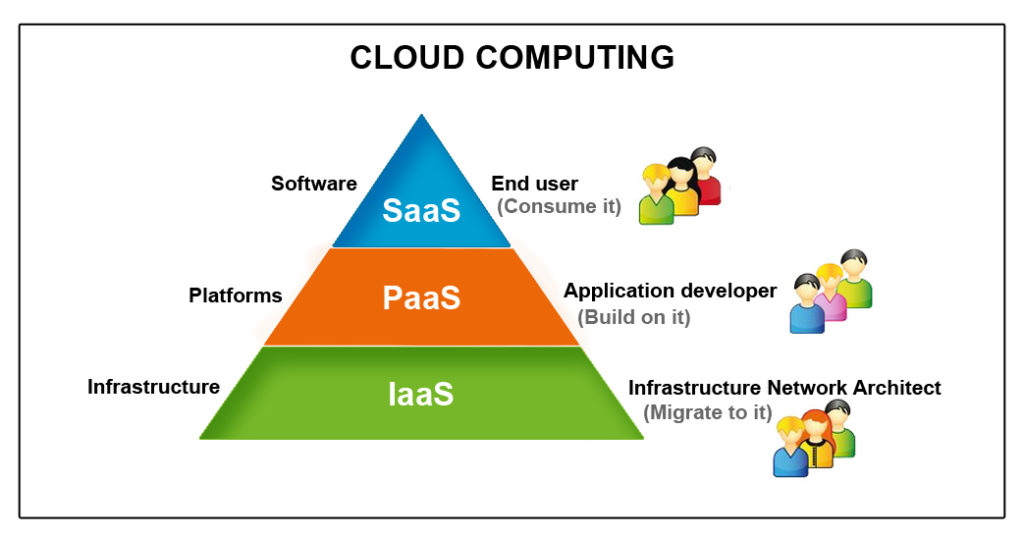
Dinesh Abeywickrama MBCS, MBA, BCS provides an overview of cloud computing and explains the categories of service one finds ‘on the cloud’.
A couple of years back, if someone had asked you what the cloud was, could you imagine what your answer would be? You’d have pointed your fi nger-tip toward the sky. In our modern era if someone asks you same question, you will have to think twice before pointing upward.
Origins of the cloud
In simple terms, cloud computing can be introduced as your computing requirements running on someone else’s hardware. In 1960, JCR Licklider introduced the idea of an ‘intergalactic computer network’ with an overarching concept of delivering computing resources through a global network. Licklider’s vision was for everyone on the globe to be integrated and accessing programs and data at any site, from anywhere (Mohamed, 2018). Cloud is a service instead of just connecting to the internet; you connect to servers, networks, and databases applications (intranet and extranet) that could be anywhere around the world. On the other hand, the cloud service facilitates you to use it without any advanced IT technical knowledge, making your life easier.
Silver lining
So, if cloud represents services making your life easier why does it appear to be so complicated? There are a wide range of approaches to using the cloud, and there are utilisation cases that off er access to plenty of diff erent cloud administrations. The future development of distributed computing will enable you to build on your decisions. The type of cloud service that you should decide on depends on what you are trying to accomplish. You should consider how the cloud is being used, where it is located and who has access to it.
Three types of cloud services:
1.Public cloud services
Some business organisations such as Microsoft and Amazon decided to build entire computing infrastructures that are available to the public, for their own use. We can consider these as public clouds. Those companies paid all the capital costs and acquired all the necessary resources to manage the services needed and hence guarantee to keep the service live (Bobbett, 2018). Public cloud services provide a free or pay-per-usage model. In other words, public clouds are virtual machines that service providers maintain for you. Selecting services like public clouds allows organisations to be cost eff ective in investing in premises and in IT resources. It enables scalability, according to usability and work load of the organisation. AWS, GCP and Azure are the star players in cloud service providers (Rouse, 2018).
2.Private cloud services
Functionality of a private cloud (Internal Cloud or Corporate Cloud) service is similar to that of a public cloud service. The one diff erence is that a private cloud service serves only one customer or organisation. In the early days, private clouds were located inside an organisation but now organisations can host externally. Because of security concerns, organisations choose private cloud services or public cloud services. At the same time, it depends on your budget requirements and functionality of business. Though private cloud services are expensive, they allow organisations to control the functionality of the cloud service (Rouse, 2018).
3.Hybrid cloud services
A combination of a public cloud service and a private cloud service can be considered as a hybrid cloud service. In a business organisation there may be areas where you have privately and publicly maintained security needs. In this context, the Hybrid Cloud service is the best service for usual business organisations.
The services off ered by the ‘business cloud’ fall into three basic types of services:
1.SaaS (Software-as-a-service)
This can be considered as the largest and most highly developed area of the cloud. Predominantly, these consist of user-end software and applications.
2.PaaS (Platform-as-a-service)
PaaS supports developers to code software for computer systems and platforms. This cloud-based service lets businesses write software to integrate existing applications, or to develop custom applications based on business needs.
3.IaaS (Infrastructure-as-a-service)
IaaS is the most basic service and it provides servers in the cloud, along with storage. Companies that have a great deal of IT expertise are the often customers of IaaS (Foote, 2018).

Future trends of cloud computing:
1. Big is better
Data is being created an alarming rate. The current level of global capacity for cloud storage is 600 EB (Exabytes). This is a quintillion bytes (1018) or one billion gigabytes. That number is expected to quickly grow to 1.1 ZBs (Zettabytes) by the end of the year with a sextillion bytes (1021). During the early days of 2000, software developers decided not to store an extra two digits in the year to save space. Nowadays, every line of code, every photo, video, email, attachment, and song end up in the cloud. Cloud vendors are capitalising on these trends to earn profi t. Some cloud vendors are providing free limited space, but actually, it is not without drawbacks as they show ads to earn profi t. Customers can pay and add more space to their cloud and remove the ads (Bobbett, 2018).
2.Privacy is the primary concern
Most corporations are concerned about the data privacy of their users. Year 2017 was a record-breaking year regarding cyber-attacks and data breaches such as the ‘Cambridge Analytica’ incident. Organisations like to see blinking lights of data centres in front of their eyes. Once you step to cloud services, you lose much control, but there are various opportunities for service providers to provide more secure tools for their organisations with extended security facilities that companies can’t provide by themselves. Business need to invest on preventing suspicious behaviours and to keep data private.
3.Server-less, the extended cloud service
In simple terms, the abstraction of servers, infrastructure, and operating systems can be considered as being server-less computing. Server-less technology enables the developer to pay per resourced use or for the actual time that your code is running (Azure, 2018). The easy use of these tools with the attractive proposition of less physical facilities will also make this trend grow in future.
Intelligent clouds marry AI
Nowadays, businesses use AI and machine-learning processes to reduce cost and to make automated dictions. Even though in the past, Cloud was an off site data store process, AI and machine learning have provided the cloud engine with greater data management capabilities and with the ability to imitate human intelligence. AI and machine learning technologies working within the cloud, is considered as being ‘intelligent cloud’. For example, ‘Alexa’ and ‘Google’ can hear your words, and ‘Google Deepmind’ and ‘Google photos’ can recognise your text and pictures (Bobbett, 2018). When we consider trends for the future customers just want to pass data to a cloud server and get expert opinion from Cloud API.

Dinesh Abeywickrama Ph.D(Reading), MBCS, MBA, BCS
References
- Azure, M., 2018. ‘Serverless computing’. [Online] Available at: https://azure.microsoft.com/ en-us/overview/serverlesscomputing/ [Accessed 21 May 2018].
- Bobbett, R., 2018. ‘Preparing for Cloud Computing Trends in 2018’. [Online] Available at: https:// www.fpcomplete.com/blog/ preparing-for-cloud-computingtrends-in-2018 [Accessed 18 May 2018].
- Foote, D., 2018. ‘A Brief History of Cloud Computing’. [Online] Available at: http://www. dataversity.net/brief-historycloud-computing/ [Accessed 21 May 2018].
- Microsoft Azure, 2018. ‘What is a hybrid cloud?’ [Online] Available at: https://azure.microsoft.com/ en-us/overview/what-is-hybridcloud-computing/ [Accessed 18 May 2018].
- Mohamed,, 2018. ‘A history of cloud computing’. [Online] Available at: https://www. computerweekly.com/feature/Ahistory-of-cloud-computing [Accessed 18 May 2018].
- Rouse, M., 2018. ‘What is private cloud (internal cloud or corporate cloud) ?’ [Online] Available at: https://searchcloudcomputing. techtarget.com/defi nition/ private-cloud [Accessed 18 May 2018].
- Rouse, M., 2018. ‘What is public cloud?’ [Online] Available at: https://searchcloudcomputing. techtarget.com/defi nition/ public-cloud [Accessed 18 May 2018].